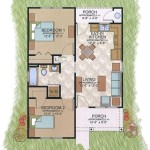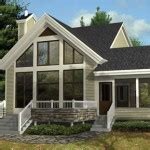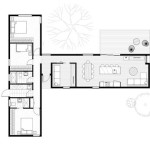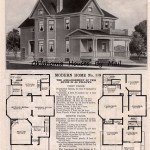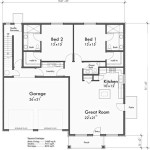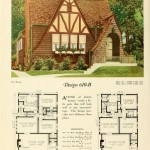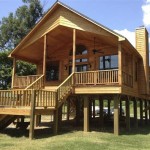Simple House Floor Plans: Easy, Efficient, Affordable Housing Design
The demand for affordable and efficient housing solutions is consistently high across various demographics. Simple house floor plans offer a viable pathway to address this need, combining ease of construction, resource optimization, and cost-effectiveness. Focusing on functional spaces and minimizing unnecessary embellishments allows for the creation of homes that are both comfortable and within reach for many.
Such designs prioritize the essential elements of a dwelling: living areas, bedrooms, bathrooms, and kitchen/dining facilities. By streamlining the layout and utilizing readily available materials, construction time and expenses can be significantly reduced. This approach doesn't necessarily imply a lack of aesthetics; rather, it emphasizes thoughtful space planning and the use of natural light to create inviting and practical living environments.
Furthermore, simple floor plans can be readily adapted to suit different site conditions and family sizes. This flexibility makes them an attractive option for developers and individuals alike, offering a foundation upon which customized features and finishes can be added as budget and preferences allow.
Key Point 1: The Advantages of Open-Concept Living Spaces
Open-concept living spaces are a prevalent feature in many simple house floor plans. This design strategy involves combining the living room, dining area, and kitchen into a single, unified area. The primary advantage of this approach is the creation of a larger, more versatile space that feels more spacious than it actually is. Walls are minimized, allowing for unobstructed views and improved flow of natural light, contributing to a brighter and more inviting atmosphere.
From an economic standpoint, open-concept designs reduce construction costs by eliminating the need for multiple walls and doorways. This simplification also streamlines the construction process, potentially shortening the overall build time. Furthermore, open layouts promote social interaction and facilitate easier supervision of children, making them particularly appealing for families. Heating and cooling costs can also be moderately reduced as air circulates more freely throughout the connected spaces.
However, careful consideration must be given to noise levels and privacy within an open-concept layout. Soundproofing measures, such as strategically placed rugs or acoustical panels, may be necessary to mitigate noise transfer between different areas. Zoning the space through furniture placement or subtle changes in flooring can also help define distinct functional zones within the larger area.
Key Point 2: Prioritizing Functional and Efficient Use of Space
Efficient space utilization is paramount in affordable housing design. Every square foot should serve a purpose, minimizing wasted or underutilized areas. This principle involves careful consideration of room sizes, furniture placement, and storage solutions. Closet space, in particular, should be maximized to reduce clutter and maintain an organized living environment.
Multifunctional furniture, such as sofa beds or storage ottomans, can further enhance space efficiency. These pieces allow rooms to serve multiple purposes, adapting to the changing needs of the occupants. Similarly, built-in storage solutions, such as shelving or cabinets, can optimize vertical space and eliminate the need for bulky freestanding furniture.
Hallways, often considered dead space, should be minimized or eliminated altogether. Integrating circulation paths into living areas or using wider doorways can improve flow and reduce the overall square footage required for the home. In smaller homes, utilizing vertical space, such as with bunk beds or loft spaces, can create additional living or sleeping areas.
The careful planning of appliance placement in the kitchen and bathroom also contributes to efficiency. Optimizing the workflow between cooking, cleaning, and food preparation areas can improve functionality and reduce unnecessary movement. Similarly, compact bathroom fixtures, such as wall-mounted toilets or corner sinks, can save valuable floor space.
Key Point 3: Utilizing Affordable and Sustainable Materials
The selection of building materials significantly impacts the cost and environmental footprint of a housing project. Choosing affordable and sustainable materials is crucial for creating accessible and environmentally responsible homes. Common examples include locally sourced lumber, recycled content materials, and energy-efficient windows and doors. These choices not only reduce initial construction costs but also contribute to lower long-term operating expenses.
Concrete, particularly for foundations and flooring, often represents a cost-effective and durable option. Its thermal mass properties can also help regulate indoor temperatures, reducing heating and cooling energy consumption. Similarly, engineered wood products, such as oriented strand board (OSB) and laminated veneer lumber (LVL), offer strength and stability at a lower cost than traditional lumber.
Sustainable materials, such as bamboo flooring or recycled denim insulation, contribute to a healthier indoor environment and reduce reliance on virgin resources. These materials often have lower embodied energy, meaning less energy is required in their production and transportation. Furthermore, incorporating passive solar design principles, such as orienting the house to maximize sunlight exposure in winter, can significantly reduce heating costs.
Energy-efficient windows and doors are essential for minimizing heat loss and drafts. Double-paned windows with low-E coatings can significantly reduce energy consumption, leading to lower utility bills. Similarly, proper insulation in walls and ceilings is crucial for maintaining a comfortable indoor temperature and reducing energy waste. The use of sustainable insulation materials, such as recycled cellulose or sheep's wool, further enhances the environmental benefits of the design.
Furthermore, simple house floor plans readily lend themselves to prefabrication techniques. Prefabricated wall panels, roof trusses, and even entire modular units can be manufactured off-site and then assembled on the building site. This approach streamlines the construction process, reduces waste, and often lowers overall construction costs due to economies of scale and controlled factory environments.
Landscaping also plays a role in affordability and sustainability. Utilizing native plants requires less water and maintenance than non-native species. Properly placed trees can provide shade in summer, reducing cooling costs, and act as windbreaks in winter, minimizing heat loss. Permeable paving materials can reduce stormwater runoff and replenish groundwater supplies.
The integration of rainwater harvesting systems and solar panels can further enhance the sustainability of simple house floor plans. Rainwater can be collected and used for irrigation, toilet flushing, and other non-potable purposes, reducing reliance on municipal water supplies. Solar panels can generate electricity, reducing or eliminating the need to purchase power from the grid.
Ultimately, simple house floor plans offer a pragmatic approach to addressing the need for affordable and efficient housing. By focusing on functional spaces, utilizing cost-effective materials, and incorporating sustainable design principles, these plans can create homes that are both accessible and environmentally responsible.

Est House Plans To Build Simple With Style Blog Eplans Com

5 Small And Simple 2 Bedroom House Designs With Floor Plans

Est House Plans To Build Simple With Style Blog Eplans Com

What Is The Est Type Of House To Build Blog Floorplans Com

These Small House Plans Pack A Lot Of Punch Houseplans Blog Com

Modern House Design How To Achieve Openness In
Est House Plans To Build Simple With Style Blog Eplans Com

Small House Plans Simple Tiny Floor Monster

Adorable 3 Bedroom Cottage Style House Plan 5289 Catalina

House Plan Drawing Samples 2d Drawings
Related Posts

